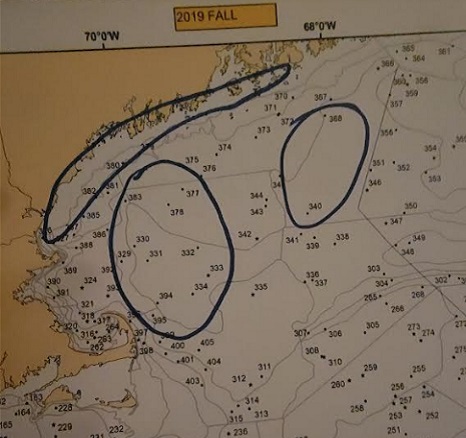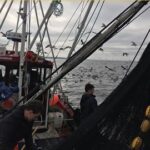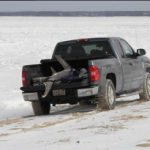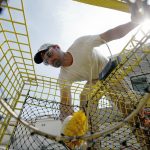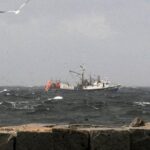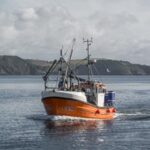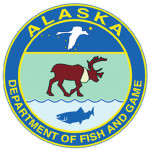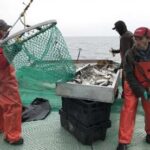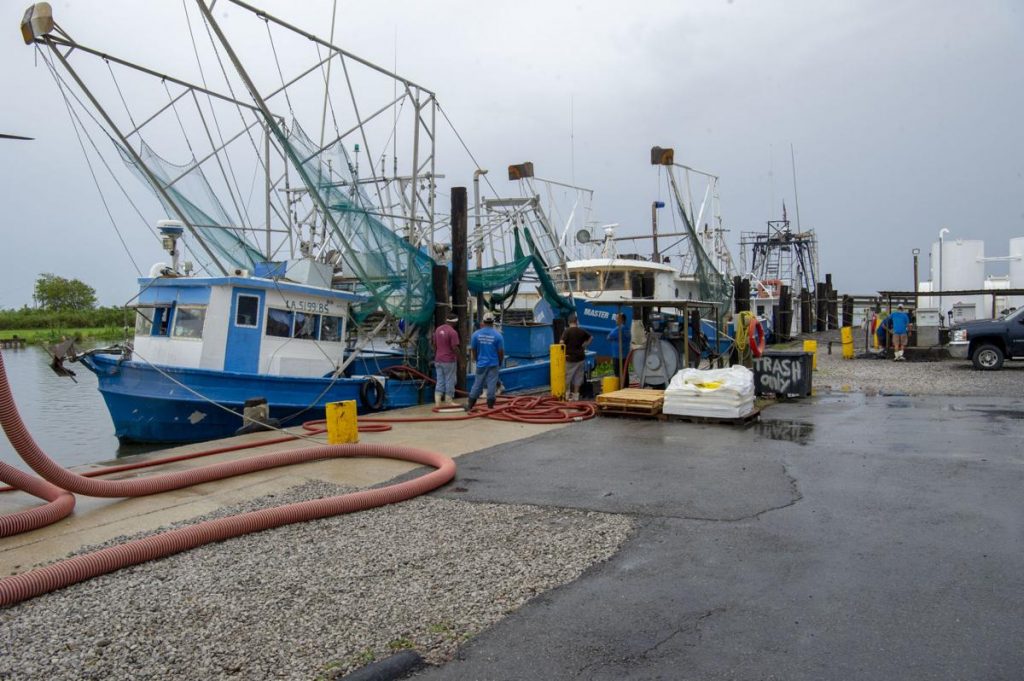Search Results for: Jerry Leeman
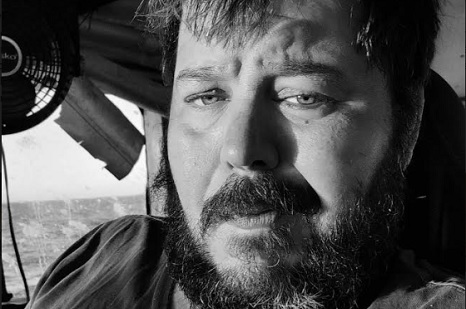
So, let’s talk about why the assessment surveys by NOAA research vessel data is corrupt.
So, let’s talk about why the assessment surveys by NOAA research vessel data is corrupt. The research vessel only makes computer generated tows randomly prints the tow log for the assessments to take place. The research vessel goes to those designated sights and makes 20-minute tows then on to the next tow. The fall survey lasted 66 days from start to finish. They were supposed to make 377 tows at 20 minutes a piece the vessel started in Virginia and tow logs were to be made all the way to the Gulf of Maine. Only 308 tows were made in this 66-day assessment. 308 tows were accomplished of the 377 supposed to be towed so only 82% of the survey was completed. If you look at the tow areas, only 30 tows were made in the Gulf of Maine. >click to read<, By Jerry Leeman
So, let’s talk about why the assessment surveys by NOAA research vessel data is corrupt.
So, let’s talk about why the assessment surveys by NOAA research vessel data is corrupt.
The research vessel only makes computer generated tows randomly prints the tow log for the assessments to take place. The research vessel goes to those designated sights and makes 20-minute tows then on to the next tow. The fall survey lasted 66 days from start to finish. They were supposed to make 377 tows at 20 minutes a piece the vessel started in Virginia and tow logs were to be made all the way to the Gulf of Maine.
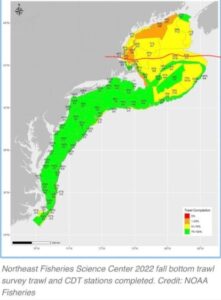 Only 308 tows were made in this 66-day assessment. 308 tows were accomplished of the 377 supposed to be towed so only 82% of the survey was completed. If you look at the tow areas, only 30 tows were made in the Gulf of Maine. Everything above the 42′ degrees 20 minutes north is the Gulf of Maine I’ve marked with the red line. So not only did they only make 82% of the assessment tows only less then 10% of the 307 tows done, were in fact the Gulf of Maine.
Only 308 tows were made in this 66-day assessment. 308 tows were accomplished of the 377 supposed to be towed so only 82% of the survey was completed. If you look at the tow areas, only 30 tows were made in the Gulf of Maine. Everything above the 42′ degrees 20 minutes north is the Gulf of Maine I’ve marked with the red line. So not only did they only make 82% of the assessment tows only less then 10% of the 307 tows done, were in fact the Gulf of Maine.
The tow lengths are 20 minutes. The average speed a vessel tows for speed average sakes is 3 knots so 20 minutes means the net travels the equivalent of 1 nautical mile. Here is one of many problems it takes to get a net and doors up to 20 minutes to reach bottom and fully open to get best possible catch. So dropping the doors and setting a 20-minute timer the net is pulled back in before it can even reach full catching potential. That alone is faulty assessment data right there alone.
Now like I said only 30 tows were done in the Gulf of Maine. So at 20 minutes at 3 knots each tow made it 1 nautical mile, so 30 tows is equal to 30 nautical miles total for all the Gulf of Maine tows. So, they are setting catch limits on assessments of 30 nautical miles in a 36,000 square mile region. That’s like 1/12 of 1% now how do you make a biomass and assessment call on 1/12 of 1 % data? You don’t, you can’t make an educated guess on nothing. That’s the best possible data they are allowing to make judgment calls in the gulf if Maines fish stocks.
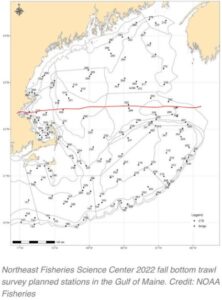 The 54-million-dollar research boat that burns 10k or better of fuel a day burned 66 days’ worth of fuel and made only 10% of the 82% of tows for the fall survey only covering 1/12 of 1 % of the Gulf of Maine. Then making management allowable catch assessments to the fishing fleet for the following year. They want to reduce the haddock allowable catch by 80% in the Gulf of Maine and lower the allowable catch for white hake that’s right their justifying those reductions to the fleet based on 1/12 of 1% that’s not even an epiphany of a guess with so little data. So how do you even call that best available data?!!!
The 54-million-dollar research boat that burns 10k or better of fuel a day burned 66 days’ worth of fuel and made only 10% of the 82% of tows for the fall survey only covering 1/12 of 1 % of the Gulf of Maine. Then making management allowable catch assessments to the fishing fleet for the following year. They want to reduce the haddock allowable catch by 80% in the Gulf of Maine and lower the allowable catch for white hake that’s right their justifying those reductions to the fleet based on 1/12 of 1% that’s not even an epiphany of a guess with so little data. So how do you even call that best available data?!!!
Their making reduction cuts based on guesses, yep guesses. You can’t even make this stuff up.
Millions of dollars in taxpayers’ money spent on a survey that’s regulating the entire New England fleets allowable catch. That type of reduction will kill the fleet with a giant economic impact along the entire seaboard. Millions of dollars of infrastructure will be lost to faulty data, and a faulty survey based on 1/12 of 1%. Now if that’s not corrupt data and mismanagement and appropriation of taxpayer money, what is?
You’ll damn the seaboard on 1/12 of 1% knowledge when the entire fishing fleet is seeing no problem with the species rebuilding process. One 10 day fishing vessel makes an average of 40 3-hour tows. That’s 120 hours of towing time equivalent to 360 nautical miles covered in one 10-day trip verses your 66-day 30 nautical mile Gulf of Maine assessment tow. Not to mention the dragger only spent 40k in expenses and covered 4 times the bottom.
You see where this is going. It’s either lack of management leadership or mishandling and purposeful corruption. Why is it that there are never any tows along the area the windmills are to be placed or along the Maine coast. Like I said talking with inshore fishermen and lobstermen they are saying their seeing these juvenile fish. Then they want to run power cables along this bottom potentially killing 60% of juvenile fish and other marine life. It’s such faulty management.
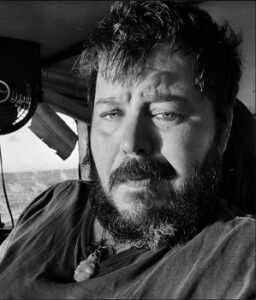 Multi Millions of taxpayer’s money being wasted inappropriately. While damning the entire New England seaboard. Someone should be held accountable for these severe mismanagement schemes. They are destroying the fishing fleet and new England’s economy and working waterfronts on assumptions. Assumptions that have no data to back up the changes being forced. They’re literally guessing. I hope you read this and share, this cannot be allowed. As always, many blessings to you all. FISH ON MY FAMILY AND FRIENDS. Jerry Leeman
Multi Millions of taxpayer’s money being wasted inappropriately. While damning the entire New England seaboard. Someone should be held accountable for these severe mismanagement schemes. They are destroying the fishing fleet and new England’s economy and working waterfronts on assumptions. Assumptions that have no data to back up the changes being forced. They’re literally guessing. I hope you read this and share, this cannot be allowed. As always, many blessings to you all. FISH ON MY FAMILY AND FRIENDS. Jerry Leeman

Are we really going to let them kill our ocean and our fishing way of life?
Generations of fishermen are no longer fishing because of the restrictions and unfair quota from faulty science. Like I said in earlier posts, we went from 400 active boats down to 17 barely active boats. Meanwhile conservation groups will tell you that we are wiping the ocean out from overfishing. That is so wrong on so many levels, it isn’t even funny. Hard to believe New England was considered to be sustainable for haddock and lobsters. Then fishing efforts went down and now we are no longer sustainable. The only thing that’s changed is windmills are on their way to the Gulf of Maine and the management at NOAA and NMFS are allowing it to happen. Why would they not talk to the people who have committed their lives to the job of harvesting our ocean?! Well, I can’t speak for everyone, but I have a few hypotheses. By Jerry Leeman. >click to read< 16:38
Are we really going to let them kill our ocean and our fishing way of life?
 How do I explain to you the injustice forced upon fishermen and lobstermen here in New England. When I was a child, I remember going to Portland Maine to greet my father and uncle when they returned from their fishing trips. I recall the boats being tied to every wharf along the harbor 2-5 boats wide side by side along every pier. It was like this all along the major fishing ports in New England. Today, they are like ghost towns. Barely recognizable from their former glory.
How do I explain to you the injustice forced upon fishermen and lobstermen here in New England. When I was a child, I remember going to Portland Maine to greet my father and uncle when they returned from their fishing trips. I recall the boats being tied to every wharf along the harbor 2-5 boats wide side by side along every pier. It was like this all along the major fishing ports in New England. Today, they are like ghost towns. Barely recognizable from their former glory.
Generations of fishermen are no longer fishing because of the restrictions and unfair quota from faulty science. Like I said in earlier posts, we went from 400 active boats down to 17 barely active boats. Meanwhile conservation groups will tell you that we are wiping the ocean out from overfishing. That is so wrong on so many levels, it isn’t even funny. Hard to believe New England was considered to be sustainable for haddock and lobsters.
Then fishing efforts went down and now we are no longer sustainable. The only thing that’s changed is windmills are on their way to the Gulf of Maine and the management at NOAA and NMFS are allowing it to happen. Why would they not talk to the people who have committed their lives to the job of harvesting our ocean?! Well, I can’t speak for everyone, but I have a few hypotheses.
Greed and positions of power have corrupted the system that was put forth to sustain our nations oceans using bad science. Hell. It isn’t even science. Its college degrees guessing with little to no true on-the-job experience. Fishermen have actual experience and have been around for generations to notice the changes because they were there everyday year after year.
My first is the dead bottom theory from lack of the bottom being turned over. When an area is no longer towed or the mud is not turned it goes sour, no nutrients kicked up to draw the microbes in, then fish stocks in. The southeast part of George’s was fished for yellow tail flounder and haddock for years then government became involved, and efforts decreased less boats turning the bottom over and now it’s a dessert. Meanwhile pieces of bottom like Wilkinson’s basin in the Gulf of Maine are top producers of fish and have a higher effort of all especially the SE part of Georges bank.
NOAA and NMFS like to talk about how they saved the dogfish. Dogfish swim in large super schools. Their more like an ocean vacuum cleaner eating juvenile fish and eggs. I find most times of the year I spend half my trips running away from them. They destroy the gear and the other fish when mixed together, your product looks like crap so you don’t expect to get paid for it.
There are literally whole regions where you don’t dare to venture. Gill netters were the line of defense against dogfish. It was also a large portion of their fleet’s income. We really don’t have a gillnet fleet left in New England anymore. Now the dogs are everywhere in large swarms eating all small eggs and baby fish. NOAA and NMFS cut the catchable limits this year by half. Why? I could literally load up on dogs with huge bags more so than any other species, but they cut it in half.
Efforts from fishing boats on codfish are very little as the fleet purposefully stays away from the shore and shoal water to stay away from incidentally catching dogfish. So that bottom doesn’t get turned over the other species that live in these regions are not harvested. Guess what. The largest bag of cod I’ve ever seen was right where the wind farms are going. But false accusations and a large pocketbook have changed their way of managing.
Care to take a guess what codfish love to eat? Lobsters. Lobstermen punch female lobsters and return them to the sea so they may reproduce the stock which was harvested hence the sustainability. So, what would laying large power lines under the water do to the survivability of those eggs or those of the fish stocks?
Like I said studies in Europe already said it’s a 60% mortality rate. How many deformities will take place, the magnetic field will throw the schools of fish off from their migration patterns. Throwing the ocean into unbalance. Meanwhile conservation groups will lie to the public. Telling folks, it’s overfishing, or they are killing whales, lying threw their teeth. Most these conservation groups incomes come from this green wind energy.
If there are no fishermen and lobstermen, there is no one to stop this. We could kill the Gulf of Maine by allowing this atrocity to take place. After everyone along the seaboard loses their heritage way of life and their purpose, now you can buy the green energy offshore wind power, so the ocean temperature does not rise. But the power kills all the species anyways inadvertently. Doesn’t make a lick of sense at all.
Thousands will lose their incomes, their homes, their businesses, and a nation loses its ocean. It all sounds good listening to the windmills creating jobs and clean energy. So, to create a few thousand jobs you cut a few thousand jobs. For the sake of trying to stop ocean temps rising you inadvertently kill the migration and spawning habits of the ocean which does the same thing as temperatures rising except worse the fish don’t migrate out of the area, they just die off from migration disruption caused by the power lines from the windmills.
All these things need to be addressed, but our governments ocean management team is caught up on this unrealistic idea because a few with good looking degrees in positions of power are getting rich. People getting 401ks, ridiculous salaries, the best healthcare plans and retirement, are literally making rules up to fit the elite agenda while the men and women who risk their lives every day at sea are being pushed into poverty.
I’d be curious if the folks at NOAA and NMFS even go into the offices these days. I know for damn sure they don’t talk with the men and women on the waterfront, so that’s government management for you. They don’t listen to anyone in the industry and if they do, it’s someone who doesn’t even go on the water or hasn’t for many years. It’s full-blown corruption and all of us will pay for it if we allow such nonsense to keep taking place.
It’s time for an overhaul across the management working with men and women who are on the scene every day. The ocean wasn’t put here for the elite few, it’s a God given right to all who walk on this earth so why doesn’t everyone have a say?! That’s right you the men and women who have spent your lifetimes on the ocean observing and watching have no weight over their degrees of the theoretical ocean.
Now greed and power were bestowed upon those who won’t listen because the green money has tied the governments agenda to their hips. If allowed to happen, they’ll kill the ocean in New England.
Not to mention when our own Whitehouse press conferences talk of food shortages, it sounds like a real good time for us to shut down that which was just sustainable food. Time for the truth to come out. As always, many blessings to you all. FISH ON MY FAMILY AND FRIENDS Jerry Leeman
Well, the windmill agenda is damning us all.
 Well, the windmill agenda is damning us all. The evidence all points in the same direction from the standpoint of the sea. I’m a fisherman and have been all my life here in New England. I was raised on an island in Maine with a bunch of fishermen and fishing families. Everyone has their own style and way of harvesting the ocean. The unspoken truth is we all are for the betterment of the ocean, stewards of the sea by trade.
Well, the windmill agenda is damning us all. The evidence all points in the same direction from the standpoint of the sea. I’m a fisherman and have been all my life here in New England. I was raised on an island in Maine with a bunch of fishermen and fishing families. Everyone has their own style and way of harvesting the ocean. The unspoken truth is we all are for the betterment of the ocean, stewards of the sea by trade.
That’s why we have management teams or supposed to which manage the stocks which the government and state control and not the actual harvesters. Here in New England, we are the most regulated fishermen in the world and that’s no lie. We have video tracking daily reporting and 100 % observer coverage. Your every move is being watched.
All the fishermen are now switching their efforts and styles of groundfishing to fish without fishing is my best way to describe it.
The managements conclusion is the biomass of the white hake are on track with the rebuilding of the stock, but their research vessel hasn’t found any small juvenile hake. Fine but why hasn’t any tow assessments been made along the Maine coast when lobstermen say their traps are loaded with juvenile fish. You know the species they say that don’t exist like hake and cod.
Then they say well the commercial fleet can’t catch juvenile fish, that’s why we have a mesh size restriction. The size of the mesh being used in the Gulf of Maine is 6.5″ large fish can swim thru the mesh. Hell, they fall out. So, what would asking a fisherman or listening to a fishermen tell you?
All commercial fishermen learn the bottom over the years where fish migrate to during certain times of the year or better put migration habits. That’s how you target species for harvest. In this case its white hake. White hake live around deep water in the mud that’s where you’d coordinate your efforts to harvest that specie. Now fishermen are purposefully not fishing the mud, because they allowed us so very few hake for the fleet to work on. Which is killing the fleet because efforts have been shifted. Now landings are down on other stocks which in turn destroys the markets because of bogus assessments. Meanwhile no fishermen is seeing a problem with the hake other than their everywhere.
All this stink over this research ships data that can’t find a juvenile hake is due to lack of experience and know how. A group of experienced fishing captains got together offering our expertise and the knowledge we’ve accumulated over many years of on-the-job training. We all agreed that the data was false and there’s an abundance of hake we can’t harvest which is restricting us from harvesting other healthy fishing stocks. Which now has caused a supply line disruption which is killing the fleet.
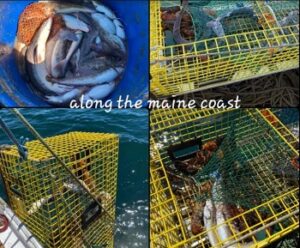 Why do all the assessment tows always seem low to minimal effort along the Maine coast? I’ve talked with numerous lobstermen and fishermen from along the coast of Maine. They all see juvenile fish along the shores in their gear and under their wharfs and docks hell these fish are freely swimming into their traps. Imagine Lobstermen hauling gear with juvenile hake and codfish in their traps. You know the species they say that don’t exist like juvenile hake and cod they can’t find.
Why do all the assessment tows always seem low to minimal effort along the Maine coast? I’ve talked with numerous lobstermen and fishermen from along the coast of Maine. They all see juvenile fish along the shores in their gear and under their wharfs and docks hell these fish are freely swimming into their traps. Imagine Lobstermen hauling gear with juvenile hake and codfish in their traps. You know the species they say that don’t exist like juvenile hake and cod they can’t find.
So experienced guys like me asked to help. Imagine that actual people wanting to help further the data to get the best accurate measurements of our stocks we harvest out of our ocean. Well Hell, we’re still waiting to help with no answer from management. Imagine that actual people wanting to help further the data to get the best accurate measurements of our stocks we harvest out of our ocean. I don’t know anyone in business who’s in business to put themselves out of business. The management doesn’t listen to the men and women harvesting the sea.
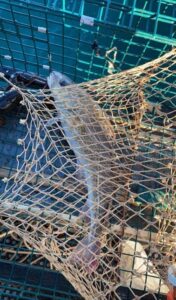 Could you imagine if small fish lived along the shore of the Maine coast. Now we put wind farms power cables right thru the nursery and the heart of the Gulf of Maine. The cables which will throw off these species built in compass’s causing 60% death mortality rate. So, this means management has done one of two things. Either they haven’t done their job or are purposefully shutting down the fisheries on behalf of wind energy. Here I am along with hundreds of fishermen and lobstermen saying the small fish are inshore along the coast of Maine, but they won’t look. Why you suppose?
Could you imagine if small fish lived along the shore of the Maine coast. Now we put wind farms power cables right thru the nursery and the heart of the Gulf of Maine. The cables which will throw off these species built in compass’s causing 60% death mortality rate. So, this means management has done one of two things. Either they haven’t done their job or are purposefully shutting down the fisheries on behalf of wind energy. Here I am along with hundreds of fishermen and lobstermen saying the small fish are inshore along the coast of Maine, but they won’t look. Why you suppose?
This brings me to my points. It’s either lack of knowledge and skill with a faulty management insight to take the fishermen’s expertise in tracking migration of the species and lack of gear knowledge in their assessments. That’s one way, or if they did do the research and found the Maine coast to be a vital part of the juvenile fish stocks in the entire Gulf of Maines ecosystem. Running power cables could destroy the entire balance of the northeastern seaboard the power pulsing thru the lines will kill crustaceans and baby fish not to mention the deformities and throw the entire ecosystems balance out of whack. All while trying to save it, we’ll destroy it for the sake of big money wind energy.
We have a real risk of losing our heritage and way of life and an entire ecosystem that feeds our nation. Perhaps for generations to come. While killing the economy the jobs and the way of life for thousands along the New England coast. I’m calling you out. Ask real fishermen and women along the coast what we really think. Allow us the time with our knowledge with the help of the science teams to do real accurate assessments before you destroy our heritage way of life and our environment for the sake of saving our environment. Going along with these windmills is the biggest anti green thing you could do.
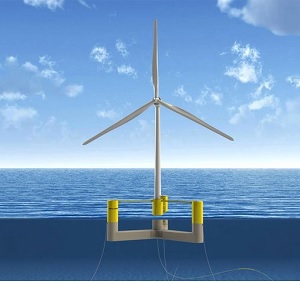 What will we tell our children when an entire heritage and economy and ecosystem collapses with it. Like I said it’s either they are not doing their jobs at the management level, or they are purposefully being corrupted at the managerial level to falsify the data and interpreting it to fit this green wind energy agenda. Which is terrible for our economy on the seaboard and our heritage and our ocean. Please, by all means, prove me wrong. The injustice going against the hard-working men and women whose professional expertise is based on the ocean is being destroyed. Either way management you’ve failed. Emergency actions should take place till these real questions get answered and not by some guess but that’s just my opinion. You know. The fisherman. Most definitely before you allow some wind farm to destroy the Gulf of Maine. As always, many blessings to you all. FISH ON MY FAMILY AND FRIENDS Jerry Leeman
What will we tell our children when an entire heritage and economy and ecosystem collapses with it. Like I said it’s either they are not doing their jobs at the management level, or they are purposefully being corrupted at the managerial level to falsify the data and interpreting it to fit this green wind energy agenda. Which is terrible for our economy on the seaboard and our heritage and our ocean. Please, by all means, prove me wrong. The injustice going against the hard-working men and women whose professional expertise is based on the ocean is being destroyed. Either way management you’ve failed. Emergency actions should take place till these real questions get answered and not by some guess but that’s just my opinion. You know. The fisherman. Most definitely before you allow some wind farm to destroy the Gulf of Maine. As always, many blessings to you all. FISH ON MY FAMILY AND FRIENDS Jerry Leeman
350 years of experience
15 captains showed up today in Gloucester, Mass., and their total experience together was over 350 years of knowledge. We discussed the white hake issue. They say the biomass isn’t the problem they’re just not seeing small hake.
Well, fishermen don’t see small white hake very often due to us using 6.5″ diamond cod ends. The fish are small and slimy they slide right out the meshes. Hell, a medium pollock can swim out the mesh’s and they are twice to three times the size of small hake. Besides the point is a regulatory community that has never asked anyone in the room anything about fishing, have never asked what we were seeing, nor our thoughts about any species.
All fishermen unanimously agreed we were all going out of our way trying not to catch hake, changing our fishing patterns to work around known hot spots to duck and dodge hake. But we still seem to be catching an abundance of hake still, but the concern is there’s no smalls. Well, where did all these extra hake that are in these areas that don’t usually have hake doing there?
Meanwhile I look at the assessment tows seem to tackle the coastline but not much effort above Cape Ann, in Massachusetts. Seems they don’t check the coast of Maine. Maybe small juvenile fish stay along the coast till they branch out to deeper water. Makes sense bigger predator fish live outside that’s why we see larger hake in deeper water. But the fact is we all agreed on hot spots the surveys were avoiding as shown. We all unanimously agreed we’d take the time to work with the scientists and assist with the help of our 350 years of experience to work together.
Falling on deaf ears. I’ve called many people in the last week no real answers back and I’ll push it to the higher ups and no response. Even if they come out and say there’s no problem with the hake their still not going to change anything. But even though there’s nothing wrong with the biomass they want to cut the allowable catch again next year on a guess! Thats right folks a damn guess. The same information they are receiving from the research vessel with no real fishermen or use of their insight or input on the trawl tows which are 20 minute tows.
What would 350 years of experience teach researchers about fishing?
Hell, it takes 20 minutes for your gear to get on bottom and the doors to spread right to open the mouth of the net, then comes the speed in which you tow you’re gear. All these things matter to the size of you’re frame ,cable lengths, depth to wire ratio and speed. If any one of these things are wrong allow me to tell you, you’ll catch nothing to very, very little.
So, a computer prints tows out that tells the research vessel where to tow. But tide, slack water the difference in daylight to night tow they don’t check, its one and done and on to the next. Don’t even get me started with moon cycles and fish habits. Why are there no real survey trails in the deep water? Neither were in the 2019 survey nor the spring 2022 and the same areas off Maine and down east known hake bottom to fishermen have very little efforts. Like I said 350 years of knowledge all agreed where to look, but very different spots then some computer program.
Observer data? Well, that isn’t even looked at in the management level to assess the allocation of the specie. So, observers are there primarily in the northeast to watch what we do, but not use the information they gather to check against the survey tows. Total nonsense. 350 years of experience telling you the only problem they are seeing is the government not working with the industry.
We asked if we the fishermen could make an assessment of our own, again that’s a no no. Makes no sense at all.
Well, I guess a college degree means it outranks 350 years of experience. This means we’ll struggle on till we can’t. When the groundfish boats stop the bait line stops for the lobstermen. Besides they say there’s no small juvenile fish in abundance and they want to allow a wind farms power cables along the bottom which could wipe out these young rebuilding fish stocks. Makes no sense I tell you. Gulf of Maine haddock reduction by 80% next year, say there’s no small hake.
But they will run power lines under the main vein of the heart of the Gulf of Maine which could wipe out an entire ecosystem. How in the blue blazes of hell is that green?!!
I haven’t even gotten started with the economic problems this will start. Could you imagine every boat and fish wharf and shop up the coast of New England empty, broke and no income for anyone to make a payment on any of this infastructure or families and homes . Don’t think the banks could float that much money. Then a real possibility of an ecological disaster like we’ve never known while being in the poor house.
We the fishermen are willing to work with the science to get the best data. Hell the western US fleet does assessments with the fishermen but won’t let the New England fishermen. Makes no damn sense at all. We’ll just have to keep the faith. I’m calling on the fishermen and friends to get on board and spread the word we are united in this mismanagement fight. It’s not the scientist’s fault if the biased management team is misdirecting them based on a model that doesn’t work. We can fix this but it’s going to take everyone this is our nations heritage, and many have forgotten that. FISH ON MY FAMILY AND FRIENDS. Jerry Leeman
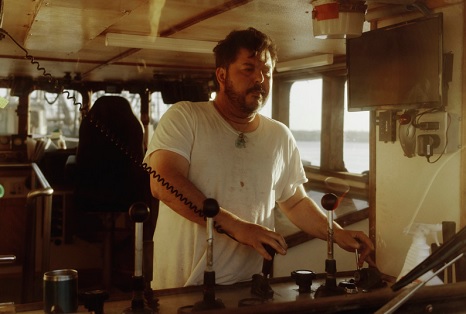
How Foreign Private Equity Hooked New England’s Fishing Industry
Before dawn, Jerry Leeman churned through inky black waters, clutching the wheel of the fishing vessel F/V Harmony. The 85-foot trawler, deep green and speckled with rust, was returning from a grueling fishing trip deep into the Atlantic swells. Leeman and his crew of four had worked 10 consecutive days, 20 hours a day, to haul in more than 50,000 pounds of fish: pollock, haddock and ocean perch, a trio known as groundfish in the industry and as whitefish in the freezer aisle. Leeman and his crew are barely sharing in the bounty. On deck, Leeman held a one-page “settlement  sheet,” the fishing industry’s version of a pay stub. Blue Harvest charges Leeman and his crew for fuel, gear, leasing of fishing rights, and maintenance on the company-owned vessel. Across six trips in the past 14 months, Leeman netted about 14 cents a pound, and the crew, about 7 cents each — a small fraction of the $2.28 per pound that a species like haddock typically fetches at auction. >Photos, click to read< 08:01
sheet,” the fishing industry’s version of a pay stub. Blue Harvest charges Leeman and his crew for fuel, gear, leasing of fishing rights, and maintenance on the company-owned vessel. Across six trips in the past 14 months, Leeman netted about 14 cents a pound, and the crew, about 7 cents each — a small fraction of the $2.28 per pound that a species like haddock typically fetches at auction. >Photos, click to read< 08:01
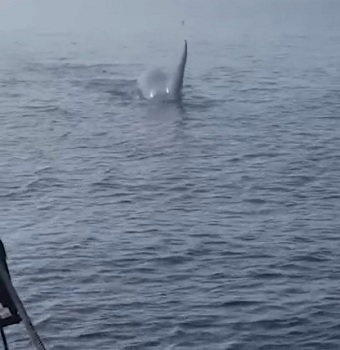
Rare Sighting: Killer Whale Cruising Cape Cod Waters is 30′ Bull Named ‘Old Thom’
The killer whale recently spotted swimming in the waters off Cape Cod is a huge 30-foot bull known as Old Thom. Just under two weeks ago the killer whale was spotted swimming 40 miles east of Nantucket, Massachusetts. Fisherman Jerry Leeman managed to capture a video of the rare sighting. In the footage, an orca can be seen swimming alongside his fishing boat. Killer whales are commonly seen off the West Coast of the U.S, however, it is incredibly rare to see them in New England—these waters are usually great white shark territory. >click to read< 10:57
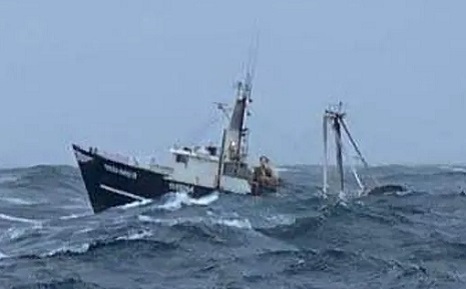
I’m a fishing boat captain. Green energy companies, government want to put me out of business
Offshore wind energy might be killing whales, but there’s no question it’s killing American fishermen. I’ve been a fishing boat captain for over 20 years. I live on an island in Maine and sail out of New Bedford, Mass. My brothers and cousins are lobstermen. Fishing is the trade our family has plied for generations. We’re proud to practice the founding craft of our nation. When colonists first settled New England, they looked to the sea to sustain them. And so it is for our coastal communities four 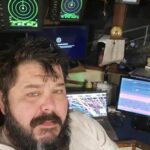 centuries on. But for how much longer? Federal regulators and foreign green energy companies seem determined to drive us off the water and lay waste to the communities that depend on fishing. If their well-laid development plans succeed, biblical calamity will follow for working people across New England. Consider the mechanics of fishing. Photos, Video, >click to read< 10:06
centuries on. But for how much longer? Federal regulators and foreign green energy companies seem determined to drive us off the water and lay waste to the communities that depend on fishing. If their well-laid development plans succeed, biblical calamity will follow for working people across New England. Consider the mechanics of fishing. Photos, Video, >click to read< 10:06







